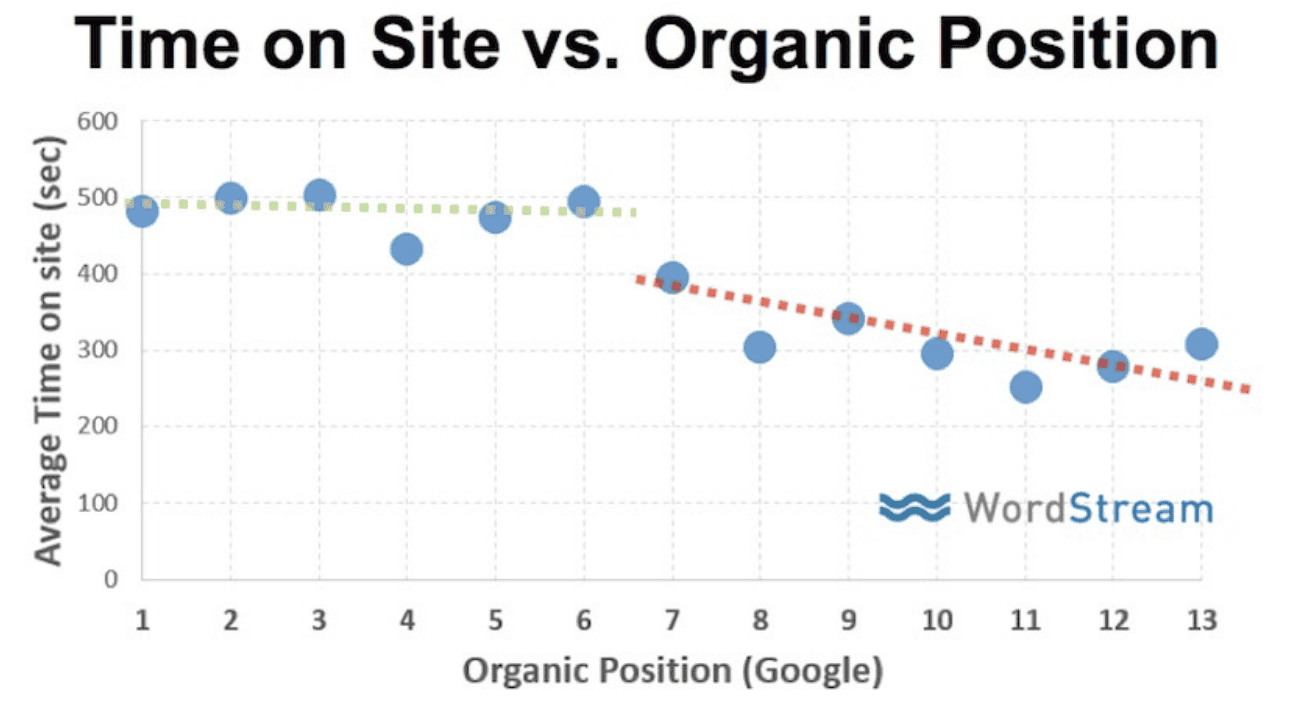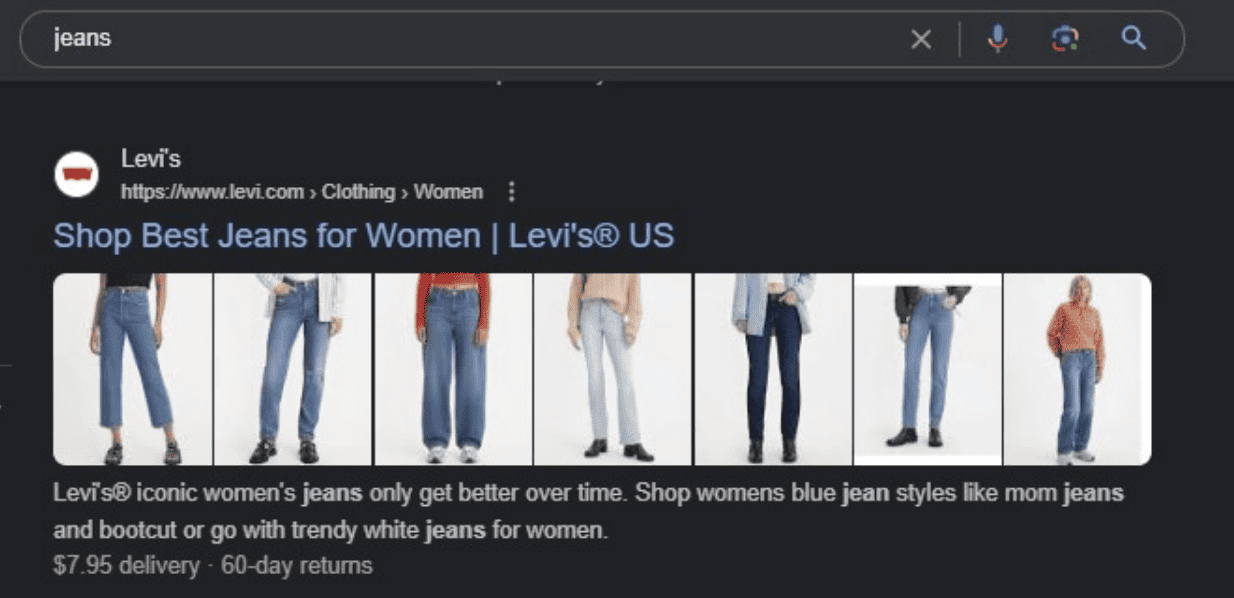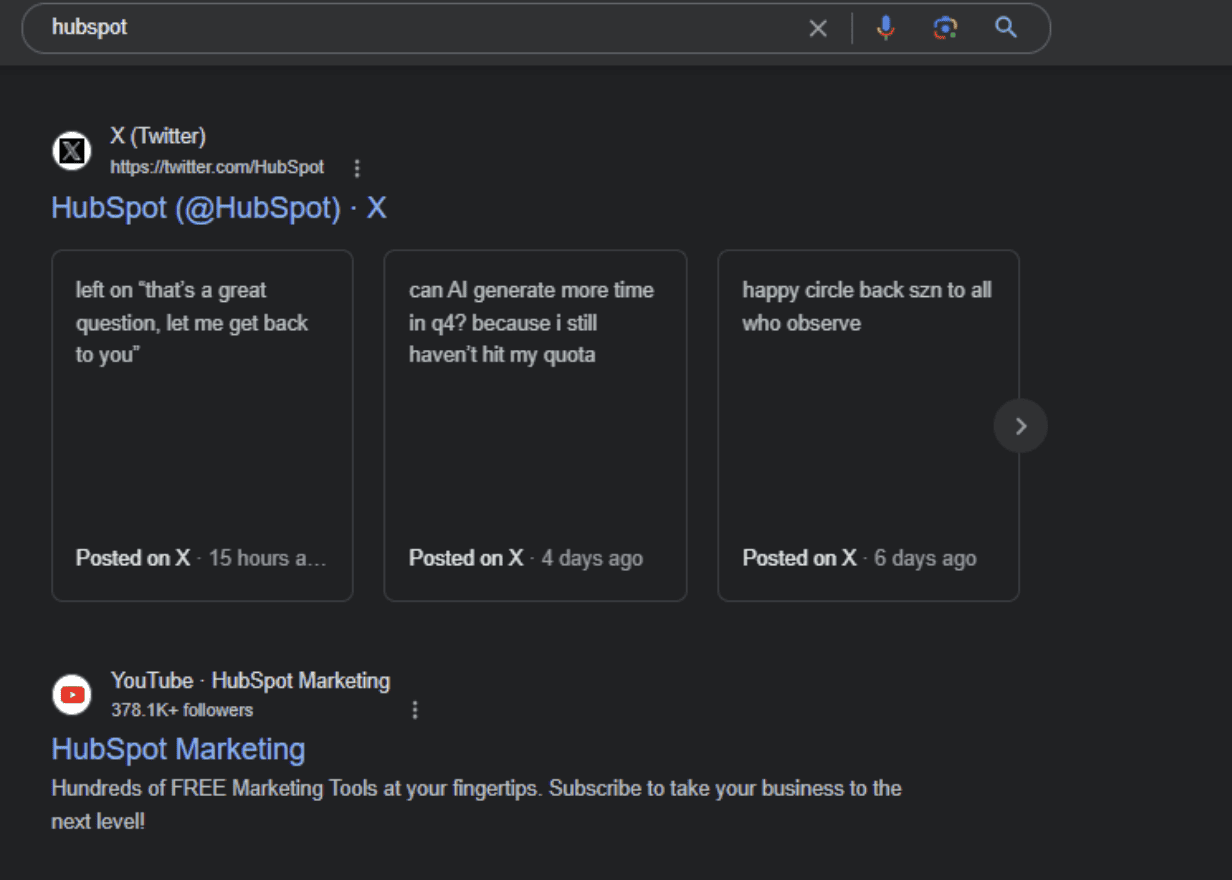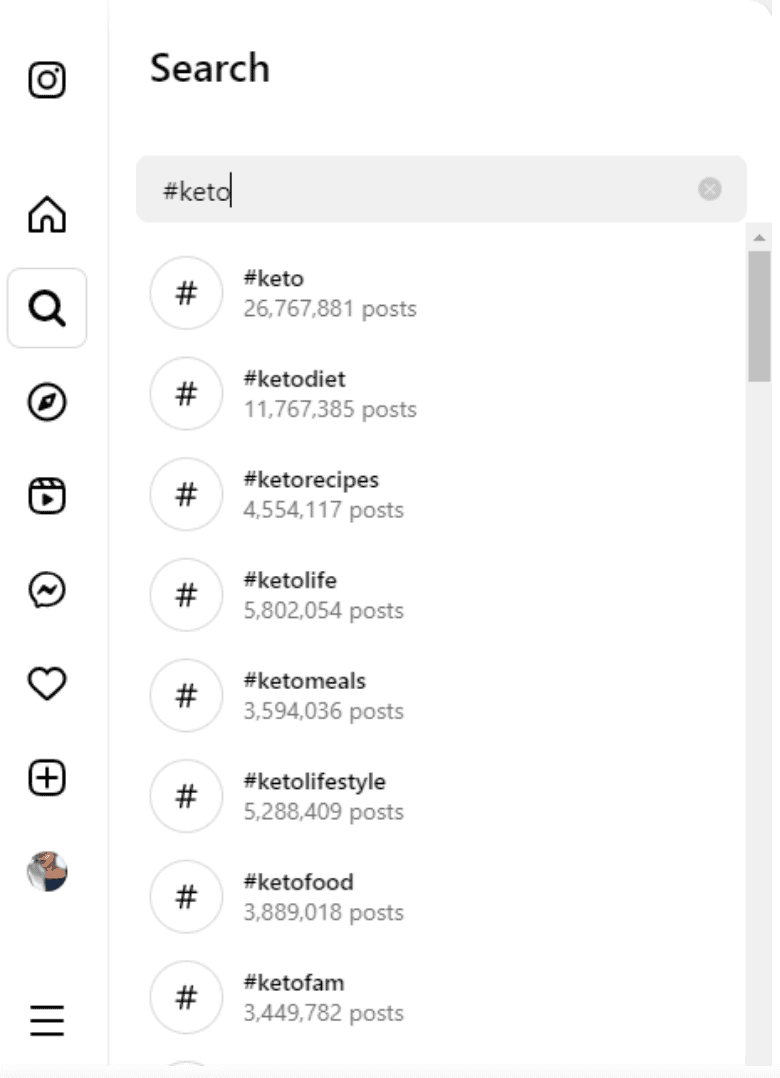Traditionally, people used social media to connect and engage with friends, family, and celebrities. But social media now serves more functions in people’s lives. A staggering 64% of internet users now discover brands through social channels. Also, 75% of Internet users use social media to research brands. As a result, social media has become an invaluable tool for businesses. That’s why 59% of marketers use social media for lead generation and sales.
But did you know that social media could be used for other purposes as well? Believe it or not, social media can also help boost your website’s search engine rankings. That’s something businesses like you should also take advantage of. With an increase in website rankings, after all, also come conversions and sales.
In this article, we’ll talk about how you can use social media to boost your SEO efforts. By the end of this guide, you’ll know the answer to that frequently-asked question: what is social SEO.
What Is Social SEO?
Social SEO is the use of social media to boost a brand’s search engine optimization efforts. As you probably already know, SEO is essentially the process of improving your website so it ranks high on SERPs whenever people search for your products or services.
But what does social media have to do with improving a brand’s website ranking?
Brand awareness is a key component of social SEO. When more people know who you are and what you do, they are more likely to perform specific actions that can boost your SEO. We’ll talk more about this in the next section.
How Social Media Affects SEO
Here’s the thing. Although social media affects SEO, the relationship isn’t direct. In other words, social signals don’t directly influence a website’s ranking. Your popularity on social media, as reflected in Instagram likes or follower counts, doesn’t necessarily translate to a good site ranking on search engine results pages.
Instead, social media can indirectly boost your site ranking by doing the following:
Helping in link-building: Social media users are likely to include website administrators. If you promote your brand enough on social media–say, one of your social media posts becomes viral—they might just go to your site and link to your relevant content. You can also easily reach out to these influencers on social media for guest posting opportunities. Guest posting is writing for someone else’s website for link-building. High-quality backlinks, as we know, are an important SEO ranking factor.
Aiding in boosting dwell time: Google hasn’t confirmed dwell time–or the time a user spends on a page before returning to the search engine results page–as a ranking factor. However, SEO experts agree that a long dwell time can be beneficial to SEO. A Moz study found a correlation between dwell time and Google site rankings.

When people know about you thanks to your social media promotion, they can search for you on Google and go to your site. If they stay long enough on your site, you may improve your site ranking.
Also, social media can help you generate ideas for good content that can boost dwell time for your site. The likes, shares, or comments of posts on social platforms can help you gauge which types of posts resonate. The in-built analytics of social media channels can also give you information about content engagement.
Social media groups and social conversations can help you identify trending topics you can leverage for your site content as well.
Keyword research: Social media is a great source of keywords you can incorporate into your website content for SEO. After all, it’s where the people who make Google search queries hang out and talk.
Improving branded search: Thanks to social media promotion, some brands develop such a high level of recognition that the brand name becomes synonymous with the product. So, instead of searching “jeans” on Google, for instance, users type “Levi’s jeans.” The more these branded searches are made, the more Google will associate the product with the brand. So, eventually, even when someone just uses the word “jeans” in their search query, that brand’s site can also pop up and have a high ranking on SERPs.

Enhancing online visibility: Social media profiles can appear on search engine results pages given a search query. People who see your social profile may go to your site and consume your content there. Website administrators may also find your brand this way, which may lead to link-building opportunities.
Overall, the relationship between social media and SEO is worth noting. Businesses can leverage it to amplify marketing efforts.
Social Media SEO Tips
Now that you know the answer to the question “what is social SEO,” let’s look at social media SEO tips you can implement for the best results:
1. Make Website Content Sharing Easy
As we’ve seen, to reap the indirect benefits of SEO using social media, you need to make sure your content reaches as many people as possible on the platform. That content doesn’t necessarily just refer to your content directly uploaded on the platform. It also refers to your website content.
How do you make these types of content reach a wide audience? Make them shareable.
You don’t have to do anything to make content directly uploaded on social media shareable. After all, social platforms already come with Share buttons users can just press to disseminate your posts. It’s a different story with your website content, though.
You will need to use the plugins of website-building tools like WordPress to add social widgets to your website. Alternatively, you can use third-party applications like Elfsight to create your share buttons.
Just make sure the buttons are easy to find.

This blog post, for instance, has a sticky social share panel with X, Pinterest, and Facebook buttons that stand out. Readers don’t have to scroll through the article to find the share buttons either.
Of course, to get people to share, you have to create original content worth sharing. Creating shareable content requires an understanding of your target audience. You also have to craft enticing headlines and include eye-catching visuals. Ultimately, the key to shareable content is relevance. Marketers should also borrow from public relations specialists’ approach to PR and create content that evokes strong emotional responses.
2. Translate Social Data into Website Content Ideas
Creating quality content for your site takes a lot of hard work, even for the most talented content creators. Fortunately, social media is a gold mine for content ideas. You can track trending topics with social listening tools and create relevant and timely web content authoritative sites can link to or users can consume.
Here are other ways you can leverage social media platforms for site content creation:
- Monitor the latest discussions
- See what types of content social media users are sharing, liking, and commenting on
You can also use social analytics tools to see your top-performing posts and replicate or repurpose them into your blog post. Your competitor data can help here, too. See what works for them and find gaps you can fill.
3. Optimize Social Profiles
Social media profiles introduce your brand on social platforms, shaping visitors’ first impressions. Think of them as digital business cards detailing who you are and what you do. However, they can do more than impress and promote your brand on social media. They can also improve your brand’s online visibility in search engine results pages. After all, social media profiles may appear in search engine results pages given a query. See what happens when I Google Hubspot. I get its social media sites on the first page of SERPs:

That’s why you want to ensure your social profiles are optimized. How else will you entice people–whether these be users who make a Google query or social media users—to go to your site and interact with or link to your content if your social profiles are incomplete?
So, make sure you include all your industry information in your social profile. These include your company name, your address, website, and phone number. Include a profile picture as well as in the example below:

As part of your profile optimization, don’t forget to incorporate relevant keywords into your bio description as well. We’ll talk about keyword research in the next section.
4. Conduct Comprehensive Keyword Research on Social Media
Using the right keywords is fundamental to SEO. Customers use certain words to find products, services, or information. If you don’t incorporate those words into your website content, in particular, potential customers won’t find your site when they make a query.
Social media is a great source of these keywords. All you need to do is observe the language social media users employ. Since they use these terms on social media, they’ll likely use them when making Google queries as well.
You can also use the search engine functions of social platforms to generate keyword ideas for your site content. On Instagram, for instance, you can research hashtags to learn how potential customers discover brands. Simply enter a word in the search bar, and the app will populate a list of suggestions.

Instagram also includes information on the popularity of each search term, indicating how many posts use a particular word.
Once you’ve identified the keywords you want to use on social platforms, incorporate them into your meta descriptions and blog content including headings and subheadings. Don’t forget the image alt-text.

Including target keywords in alt text also makes your images discoverable on Google image searches. The example above is one of the top image results for ‘pumpkin latte.’
A word to the wise: avoid keyword stuffing and integrate keywords into your site content as naturally as possible. Use two to three primary keyword phrases and work them around your content.
5. Develop Connections with Your Audience and Influencers
Build relationships on social media as part of your social SEO strategy. This won’t only help grow your social media presence. It will also help ensure you remain top-of-mind with people who can help boost your site SEO.
Social media stats show that 92.7% of internet users are on social media, spending an average of two and a half hours daily. So, there’s no better place to cultivate and nurture relationships with customers than on social channels.
Just follow the five steps to building authentic relationships with them:
- Understand your target audience. Knowing who your customers are, the content they like, and their preferred social media channels is critical to developing meaningful relationships. You can’t make a connection using the wrong social media platforms or sharing irrelevant content.
- Be personable. People develop relationships with other people. That’s why adopting a social media brand personality is crucial. It’s easier to relate to brands to sound and act like humans. So, share behind-the-scenes content, use customers’ language, tell brand stories, etc.
- Engage regularly. Nothing shows followers you value them like responding to comments, tagging or commenting on user-generated content, asking for feedback on Facebook, and sharing customer review Instagram post. The trick is to be consistent. Sporadic engagement makes you look unreliable at best or uninterested at worst.
- Share visually appealing content. Humans are visual creatures. Memes, GIFs, images, and videos attract people’s attention and deliver 650% engagement rates compared to text-only content.
- Focus on community-building. It works for Beyonce; it can work for you. Encouraging a sense of togetherness among customers helps boost customer loyalty. It requires creating a unified identity (think the Beehive) and an engagement strategy to keep members active.
Build relationships with influencers as well. They can promote your brand to targeted customers who will trust you and go to your site because of your association with their favorite content creator. Plus, these influencers themselves are people who likely have authoritative sites that can carry your backlinks.
To build relationships with influencers, start by engaging with their social content. Once they have an idea about who you are, you can send them a message for a possible collaboration (guest posting collaboration or a paid promotion, perhaps?). You can use an email finder to search for their relevant contact details.
6. Include Links in Social Profiles
Links on social media posts are usually no-follow links, meaning they don’t have a direct impact on SEO. That includes the URL link in the bio section of social media accounts.
That’s not to say they can no longer help your website’s SEO. After all, if you post a link to your site for everyone to see in your profile, like Nike did below, you’re essentially promoting your site, too.

Since people now know your website, they can access it any time even when they’re not on the social platform.
The links on your social profiles should reflect your branding, too. If your link doesn’t make sense–they’re just some random letters and numbers put together, for example–you can’t expect to enhance brand recall and reap the indirect benefits of SEO.
7. Adjust Social Media Publishing Schedule
We mentioned building long-lasting relationships with customers is an important social SEO strategy. We also said that publishing social content is one way you can do this.
But you shouldn’t just publish your content whenever you want. To ensure maximum engagement and increase your chances of users remembering you and going to your site, you should publish engaging social content at a time they’re active on the social platform.
There’s research data on the best times to post per social platform. For instance, some say the best time to post on Facebook is Monday 10 a.m. On Instagram, they say the best times to post are between 9 a.m. and 1 p.m., on Mondays, Tuesdays, Wednesdays, and Fridays.
However, this data may or may not apply to your business. Ultimately, your customers determine the best time to post.
So, look at in-app and third-party analytics tools that provide insights into when your highest engagement occurs.

This dashboard, for instance, shows you the number of followers online throughout the week. The day with the most logged-in followers is Thursday, with peak hours between 9 a.m. and 1 p.m.
Then use that data to adjust your social publishing schedule. Once you pick a posting day and time, stick to it. It builds familiarity and trust with followers.
Conclusion
What is social SEO? It’s basically leveraging social media to indirectly boost your SEO efforts.
You learned seven social media SEO strategies to follow. Make your website content shareable, translate social data into website content, and optimize your social profiles. Also, use social media to conduct keyword research. Don’t forget to develop connections with customers and influencers. Include links in your social profiles, and, finally, adjust your social media content publishing schedule.
Although the link between social media and SEO is indirect, brands with a robust social media strategy can easily perform better on SERPs. Good luck!